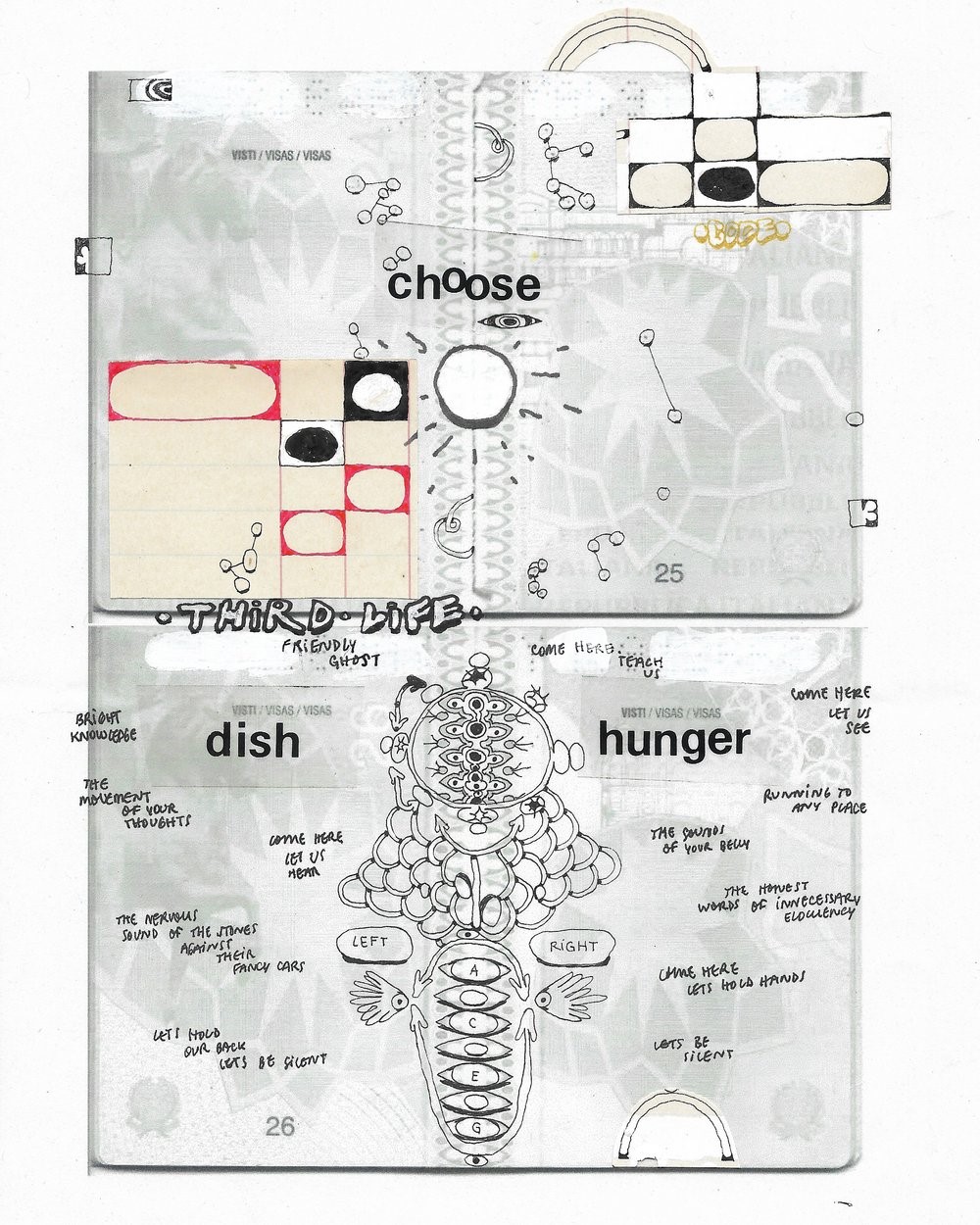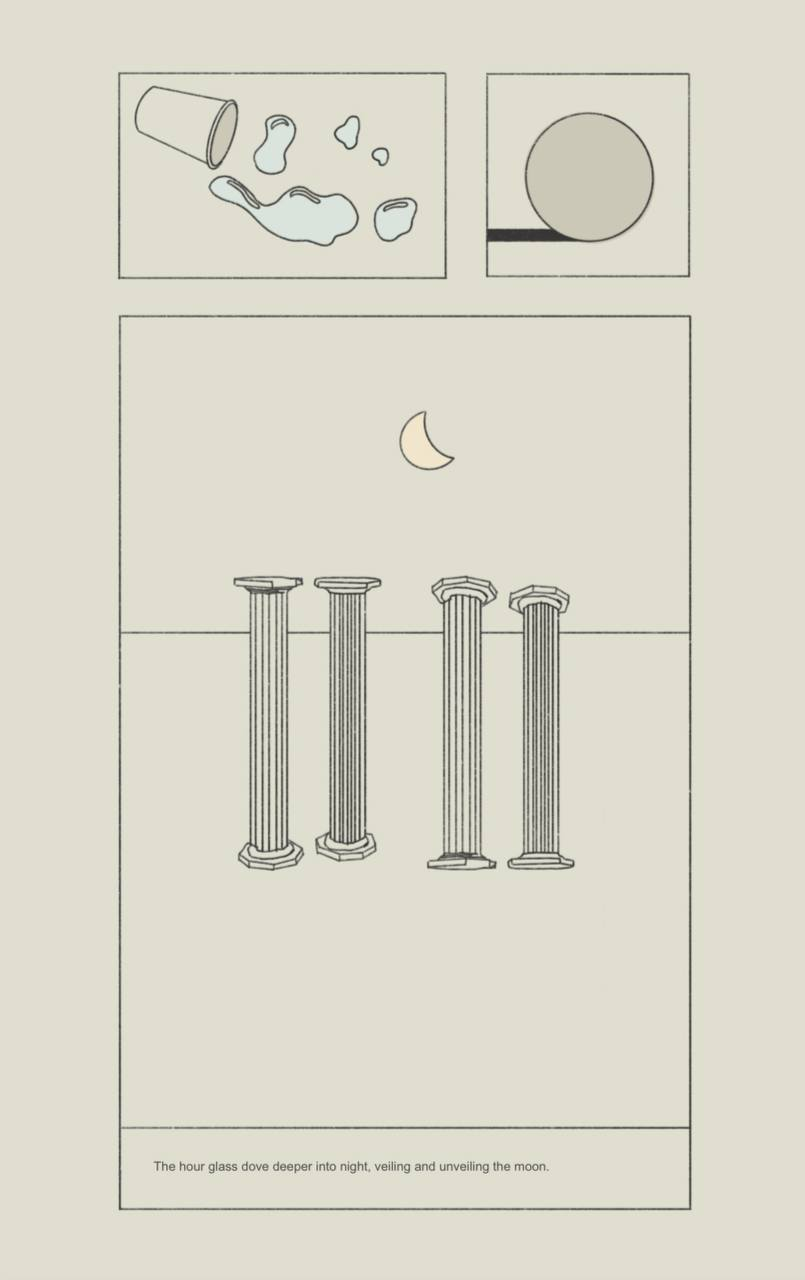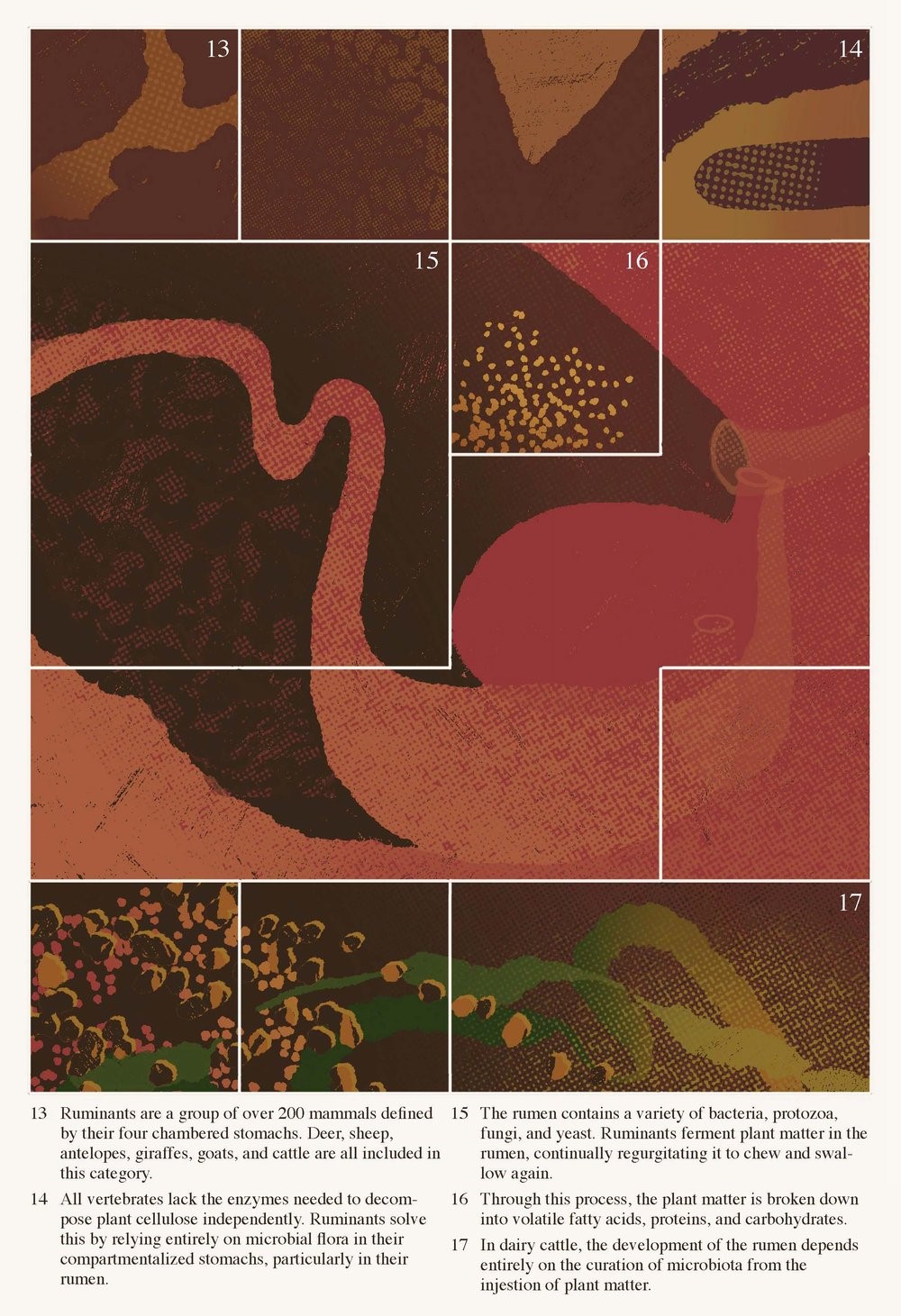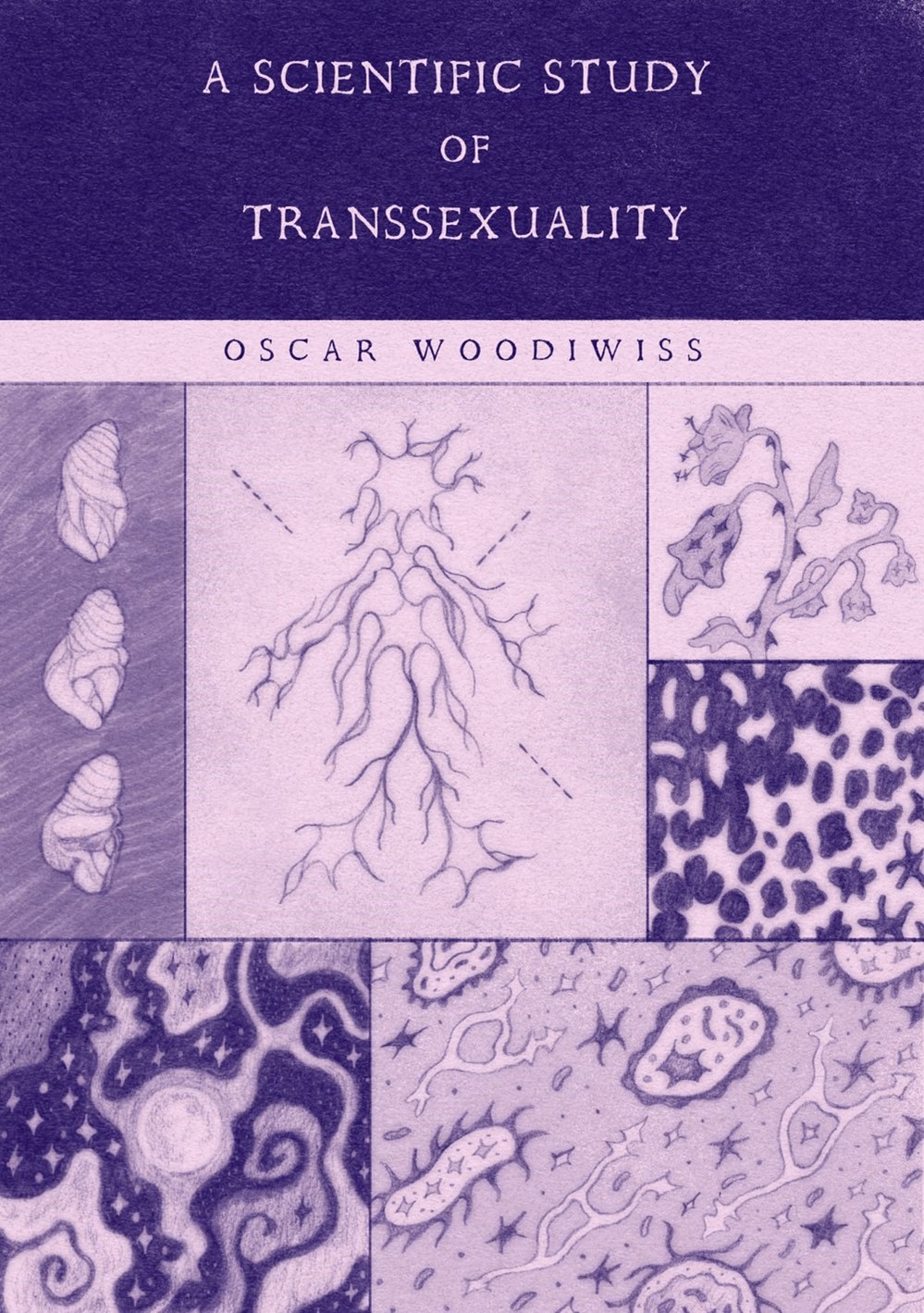For the third year in a row, UK small press force ShortBox has organized its ShortBox Comics Fair, a month-long extension of its conventional publishing corpus which offers a great many—this year's lineup features no less than 136—comics of varying aesthetics, styles and engines. Publisher Zainab Akhtar has indicated that, while ShortBox's year-long operation is drawing to a close, the digital fair will continue on its annual basis. And it is a natural progression from ShortBox's day-to-day operations: as in the standard line, these titles are curated and collated by Akhtar (from cartoonists' submissions), but revenues entirely benefit the artists, with the purely-digital format offering a reduced risk in fulfillment-related expenditure and an elevated curated platform; it is, likewise, a testament to the publisher's curatorial sensibility, with a dizzying array of what constitutes comics.
As I have done in the previous two years, both fueled by excitement toward that curatorial school and burdened by an Achilles' heel of FoMO,1 I have bought all of the comics put on offer, and while I have not yet read all of them, I wanted to spotlight several pieces worthy of special mention. Consider this your primer, in the hopes that you should find yourself wanting to further investigate. The ShortBox Comics Fair remains open through 8:00 PM, UK time, October 31.
Several entries in this year's fair, as might be expected, are by creators published by ShortBox in the past. One such comic is Bunny Punch: Meal Replacement by the Swiss cartoonist Michael Furler (his second SBCF comic, after last year's A Tomato in Chains, itself spinning out of his comic Helena, published by ShortBox proper). Furler's work is characterized by a hyper-casual tonal absurdism, a smallness of scope contrasted by "loud" cartooning that fits into a distinctly post-DeForge/Kyle/Zacchilli milieu: fluid, almost blobby shapes with detailing varying between full articulation and a looseness that borders on the tentative, rendered by a wide array of digital textural tools and brushes within frenetic panel arrangements.
It's this sense of cluttered whimsy that serves as Bunny Punch's motor, as Furler sets his sights on corporate branding's subsumption of personal identity: Bunny Punch is a young woman with seemingly-unlimited super-strength, inhibited only by an obsession with the seemingly-real superheroine Saturnina and by her own desire to be viewed as a hero. When a marketing hologram of Saturnina tells Bunny Punch to buy a "meal replacement" called Sludge, things escalate - this meal replacement is sold separately from the apparatus needed to actually consume it, leading Bunny Punch on an odyssey to try to open the Sludge canister in an already-emotionally-compromised state after a fellow consumer makes the mistake of jokingly changing the holographic superheroine's head into a poop emoji.
The world of Bunny Punch is ruled by a Debordian array of appearance artifice that has defeated its competing real. Saturnina's only real existence is as a holographic projection used for marketing, and what she markets is a "nutritional paste"; the kiosk vendor hides behind a hologram of protective glass because his parent company doesn't provide any actual glass, and is armed with a toy gun. It's little wonder, then, that Bunny Punch herself is suckered into playing this same game; she introduces herself as a "costumed hero" but admits to having "not much luck with being a hero so far"; her only real "honorable" act is protecting the dignity of this hologram - which itself is aware of being an AI fiction not in any particular need of protecting.
The punchline is, of course, inevitable: having kept her eyes on the prize and whimsically beaten up whomever stands in her path, Bunny Punch finally has her Meal Replacement, and, well… it's sludge. What the hell else can it taste like? But that's precisely where the story ends - on her disgusted, disoriented expression. And Furler certainly knew well the implications of placing this story, at least nominally, within the vocabulary of stories remarking on superhero stories by using their same aesthetic: no change will come out of this. The fan will protect the spectacle, and the spectacle will only ever protect itself.
One of the pieces that immediately got my attention is the 22-page say a by abuelaignea, which describes itself as "an ode to the reader" and emphasizes the reader's role as a collaborative prism. The ruling force of say a is a textural maximalism: for a comic whose debut is digital, abuelaignea's work is disarmingly physical in its tools, making use of various surfaces and media, including several kinds of paper (ruled, dotted, blank; white, colored, translucent vellum), physical pages occasionally stacked atop—and thus bleeding into—one another.
This range of tools is naturally complemented by the cartoonist's own mark making: say a is not a comic in the intuitive sense of the word, mediated by imagery that is clear and neatly legible on any visual plane, instead bringing to mind comics-as-poetry endeavors such as the (now sadly defunct) anthology Ink Brick; its pages are not organized so much as their contents spontaneously and independently emerge, as if unaware of their overlaps or of spaces left between components - comics as hermetic design rather than pictorial illustration.
If the result is informational clash or disjoint, it is entirely intentional: say a is, at its core, a semiotic affair to be deciphered, or at least pieced together. I am entirely unfamiliar with the cartoonist, so I cannot comment on the rest of their body of work, but at least within the confines of this particular work it is clear that abuelaignea does not regard the page as an inherent whole that warrants a unitarian cohesion - ideas appear as fragments and splinters, lending each piece an authentically synaptic feeling. What ties it all together from a thematic perspective, allowing the work to transcend a more conventional sketchbook zine format, is its elegiac air, as abuelaignea grapples with the intimacy of the very act of creating for another reader; they appear ambivalent, at once thankful for the existence of the reader as a known-unknown entity and mourning the narrowness of that field of interaction. Sentiments like "We are the same here / touching our voices in your head / I'm thankfull [sic] if I can live in your mind" set the tone; if art is a form of communication, abuelaignea is haunted by the as-in-a-mirror-dimly nature thereof, enamored of the reader as a hypothetical yet preoccupied by the particulars - a third dimension forever out of reach.
Similarly opaque and preoccupied with absence is the beautiful 16-page The Method of Loci by Myraha Harmon-Arias, predicated on the mnemonic principle of the same name, rendering information in imagined adjacent spaces in order to strengthen connections between initially-separate notions (often referred to as 'mind palaces' or variations thereon). The notional—or, in this case, emotional—range that the cartoonist spatializes is one of loss, and the tonal comparison that immediately comes to mind is Caitlin Skaalrud's Houses of the Holy; Harmon-Arias employs a similar tone of grieving, offering many clashing signs but few answers.
The two diverge in presentation: where Skaalrud's landscapes are ones of rich, heavy inks, The Method of Loci is defined by a sparse, austere landscape reminiscent more of Martin Vaughn-James' The Cage; like Vaughn-James' Piranesian anti-structure, Harmon-Arias' landscapes are similarly haunted by the absence of a human connection once extant and now irrevocably gone. But where Vaughn-James discusses communication in the abstract, referring to people in the disembodied collective, Harmon-Arias is particular, accurate, discussing two people in the individual: one that is gone and the other that remains. Where Vaughn-James' signs of a former life manifest predominantly in machinery of recording, Harmon-Arias employs the supposed 'minutiae' of moisturizer and tissue paper. The surreal nature of Harmon-Arias' work is aided by its textural (or anti-textural) characteristics - space is rendered sparingly, with uniform line weights and no shadow or lighting effects, resulting in an almost oppressive sense of only-nominally-three-dimensional geometry existing as though in a vacuum, in a physics of isolated objects.
Memory as presented in The Method of Loci is a principle of dual existence: presence can only ever be recollected through the prism of its subsequent and quite inevitable absence. So does the narrator begin to cast doubt on their own experience, incubating questions out of the hitherto-presumable? ("Did your glasses ever fit? Or were you still pretending for me to notice?") The self itself is eroded somewhat without an external third party to experience it, as they begin to ask questions about how they had been perceived - questions that will, of course, go unanswered.
And yet the question that appears to dominate The Method of Loci is 'Where to next?' The emotional arc appears to go from destruction (matchsticks, billowing smoke) to rescue (emergency medical kit, life jacket), ending on a simple "I saw you, and thanked you, and chose to try again." To Harmon-Arias, the mental landscape demonstrates its own scarring, but it must nonetheless be inhabited - otherwise, what chance is there for the realness and fullness of life?
Symbiont by Bailey Gross assumes a detached diagrammatic approach, fitting its ambition to "examin[e] the definition of the discrete individual organism"; its shapes are so zoomed-in as to border as the abstract, as the imagery seeks to reflect the microscopic cellular processes. Here we have two aspirations. The first, the formal, is the ever-pertinent question of whether the two categories 'comics' and 'sequential visuals' exist as complete synonyms, signifiers of the same whole, or if the former is merely a subcategory of the latter; by presenting itself as a text comprised of scientific diagrams with accompanying (if separated, located at the bottom of the page and corresponding with numbered panels) text, it is, of course, defiant of the base assumption of comics as story for entertainment purposes, thus calling into question, at least momentarily, the function of the given form.
But the second aspiration, which commands the brunt of Gross' attention, is the balance of aesthetic and rhetoric. This work is, of course, no mere biological primer; its function as 'art' emerges as a hijacking of the scientific-visual vocabulary. As such, the very artistic locus shifts, with the key question being not 'is this an entertaining story?' but rather 'is this effective visual rhetoric?'
The answer, largely speaking, is yes; the "rhetoric" component tends to take precedence over the "visual," resulting in the panels of certain pages being organized in somewhat counterintuitive fashions and somewhat undermining the flow of 'straight' scientific presentation. Nevertheless, Gross operates on a strong gradual basis, offering five vignette-like cases of natural evolutionary 'collaboration' between organisms, with a turn inwards to our own immune system offered almost as a bridge, before the shift from subtext to text in the final six pages (a third of the overall work). It is impossible—no, worse, insincere—to view nature as a construct made up of individuals operating in a vacuum; the self itself is an arbitrary construct, a division for division's sake, a dismissal of interdependence that goes against what it means to be alive. This is not necessarily a new message, neither in nature nor in implicit politics, but well-articulated and considered enough about its examples (even concluding with a list of further reading sources to demonstrate the lineage and well-established nature of its thoughts) to avoid falling into cliché.
In both form and viewpoint, Oscar Woodiwiss' A Scientific Study of Transsexuality serves as a striking companion to Gross' piece. While based less on scientific bases than the dialectical presentation, Woodiwiss shares Gross' two-way equation identifying the scientific with the political, and the consequent view of as-above-so-below political scalability. The 30-odd pages of A Scientific Study of Transsexuality are divided into three chapters, three orders of magnitude: micro-organismic, floral-and-faunal, and cosmic-astronomical.
Unlike Gross, who constructs their rhetorical detournement gradually, Woodiwiss announces their own departure from the dryness of pure scientific presentation from the very beginning; they employ a contrast between the lyrical language around trans existence ("single-celled organisms sparked alive against each other's touch / burning with friction and desire") and the self-justifying crassness of its cis counterpart (in the second chapter, a "chaser gnat" accosts a transsexual plant with invasive questions on genitalia), while creating an all-encompassing visual parallel with human anatomy.
Of course, it works in no small part thanks to Woodiwiss' cartooning; his figurative depictions are precisely rendered, with a variation of line weights that bestows the imagery a tactile, earthly intensity. Yet, rendered completely in lead pencil on purple-pink paper, there is nonetheless a softness, a vulnerability underlying the whole affair, which fits the all-encompassing theme, being both the ubiquity and beauty of transness and the precarity of its position. This beauty does not exist purely in the realm of digestible affirmation, safe in its vagueness. Under Woodiwiss' hand, all facets of transness receive a granular, pointed view: with a painstaking realism he mirrors the craters of Mars with acne as a side-effect of hormone replacement therapy.
The third and final chapter is at once the broadest and the most immediate, as the planets themselves embody transness. Here the crescendo of urgent beauty reaches its culmination - where the first chapter dealt with the befuddlement of scientists and the second dealt with predatory antagonism, the planets take on the ecstasy of interiority. Woodiwiss concludes by introducing "planetary hormone therapy," depicting paraphernalia formative both to its scientific health (pills, hormone injections) and to its identity and safety (magazines, "cultural influences" such as Elvira), and pointing out the crucial nature of protecting all facets of trans life. He then offers a coda of sorts, being the heat death of the universe: "scientists predict that when the sun decides to swallow us all / the world will end in an interplanetary orgy of hormones / A cosmic gender inferno of hot thermal pulses / liquid iron erupts from Mercury's molten core whilst Jupiter shoots stars." True self-knowledge, being the articulation of self—its boundaries, its surroundings, its fluidity, the contexts that allow it to actively claim its form—is in itself orgasmic in Woodiwiss' final images; with active intent and cultivation, the self itself becomes pleasure. And who am I to argue with a viewpoint as beautiful as that?
* * *
I've barely scratched the surface of this year's offerings, but this much I can say without hesitation: if the role of a curator is to simultaneously articulate the form's foundational range of function by choosing disparate voices and to advance that form by articulating connections between voices, I'd be hard-pressed to find someone doing a stronger, more confident job than Zainab Akhtar. For the third year in a row, the ShortBox Comics Fair, like the publishing endeavor before (and alongside) it, has achieved its desired impact: a comprehensive demonstration of curatorial intent at its most active - and most enjoyable.
* * *
- While some of the titles from the 2021 and 2022 fairs have seen later print publication, either by the authors (example: Leo Fox's My Body Unspooling), by other publishers (Jean Fhilippe's Leftstar & the Strange Occurrence, forthcoming via Silver Sprocket) or by ShortBox itself (Jean Wei's Mending a Rift), most remain unavailable to the best of my knowledge.
















